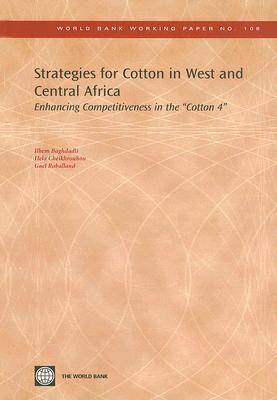World Bank Working Paper
3 total works
Competition and Performance in the Polish Second Pillar
by Heinz Rudolph and Professor Roberto Rocha
Published 1 January 2007
Financial Sector Dimensions of the Colombian Pension System
by Heinz Rudolph, Hela Cheikhrouhou, Professor Roberto Rocha, and Craig Thorburn
Published 1 January 2007
Strategies for Cotton in West and Central Africa
by Ilhem Baghdadli and Hela Cheikhrouhou
Published 30 August 2007
Based on comprehensive empirical studies, the paper identifies key reforms and defines strategies to enhance the competitiveness of the cotton sector in West and Central Africa. Lessons learned from the 1990s suggest that transferring public property to private enterprises is not enough, by itself, to put the sector back on a sustainable path.The cotton sector in most West and Central African countries is critical in terms of its contribution to GDP and exports as well as poverty reduction. Until recently, the cotton sector was characterized by a vertically integrated monopolistic structure, whereby all transactions in the chain including, ginning, transportation and input supply were handled by the State Owned cotton company. However during the late 1990s, a number of internal and external factors created the need to reassess the structure of the cotton industries in the region.This assessment revealed that, in this new context, vertically integrated monopolies were too costly to ensure vertical coordination of the cotton supply chain. Areas of improvement are associated with the following three targets: increasing yields to produce larger volumes, reducing cost and increasing the reliability of grading, and enhancing sales revenues. The paper explains how these targets can be effectively pursued through sector reforms.


